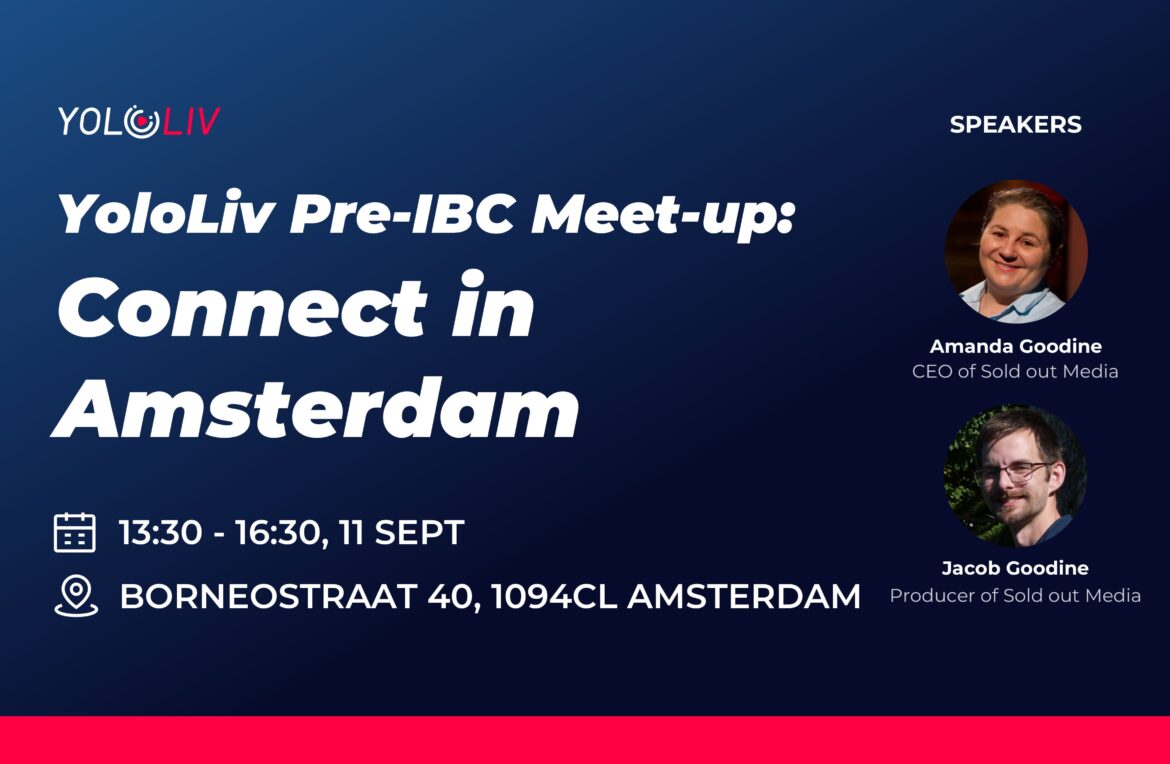In our Pre-IBC Meet-up in Amsterdam, an experienced broadcast team, Sold Out Media, shares how YoloBox helped them simplify workflows, launch international channels, and engage global audiences— from a portable device.
Introduction
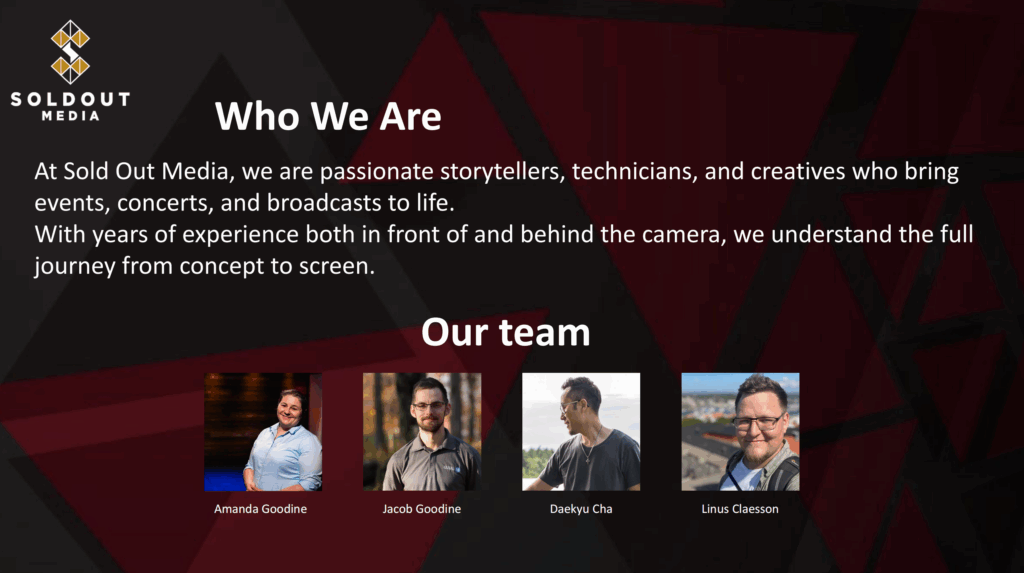
For Amanda and Jacob Goodine, founders of Sold Out Media, broadcasting has always been about connection—whether covering live festivals, sports events, or documentaries across Africa and Ukraine. But as the industry evolved, they faced a challenge: how to deliver high-quality, multi-platform broadcasts without the complexity and cost of traditional broadcast setups. That’s when they turned to YoloBox. In this meet-up, Sold Out Media shares how YoloBox helped them move from satellite trucks and custom-engineered hardware to a streamlined, portable production system—enabling them to launch new channels, engage audiences in real time, and grow their business without growing their overhead.
The Challenge: Breaking Free from “Big Gear” Broadcast Workflows
With decades of experience building control rooms, TV buses, and mobile broadcast solutions, Sold Out Media understood the limitations of traditional equipment. “We used to need a truck full of gear, permits, and a crew just to do a single live hit,” Amanda recalls. “It was expensive, slow, and physically demanding.” As audiences shifted to digital platforms, clients—from churches to international conferences—began asking for agile, affordable solutions that could stream everywhere at once. Sold Out Media needed a tool that could keep up.
Why Sold Out Media Chose YoloBox
After integrating YoloBox into their workflow, the team highlighted these game-changing benefits:
1. All-in-One Portability
Unlike traditional setups requiring separate mixers, recorders, and monitors, YoloBox combined everything into one compact device. “We could finally carry a broadcast studio in a backpack,” says Jacob.
2. Multi-Platform Streaming Made Simple
From broadcasting live sports and concerts to running separate social media feeds, YoloBox allowed Sold Out Media to manage complex productions with ease. They even created custom substreams to handle music licensing issues—swapping content seamlessly between broadcast and digital outputs.
3. Remote Collaboration Enabled
During a 5-hour monthly broadcast, Jacob operated a substream from home while on parental leave—receiving feeds via SRT and managing graphics in real time. “It revolutionized how we work,” he says.
Make sure to check out this clip from the YoloLiv Amsterdam Meet Up Live
Real-World Use Cases
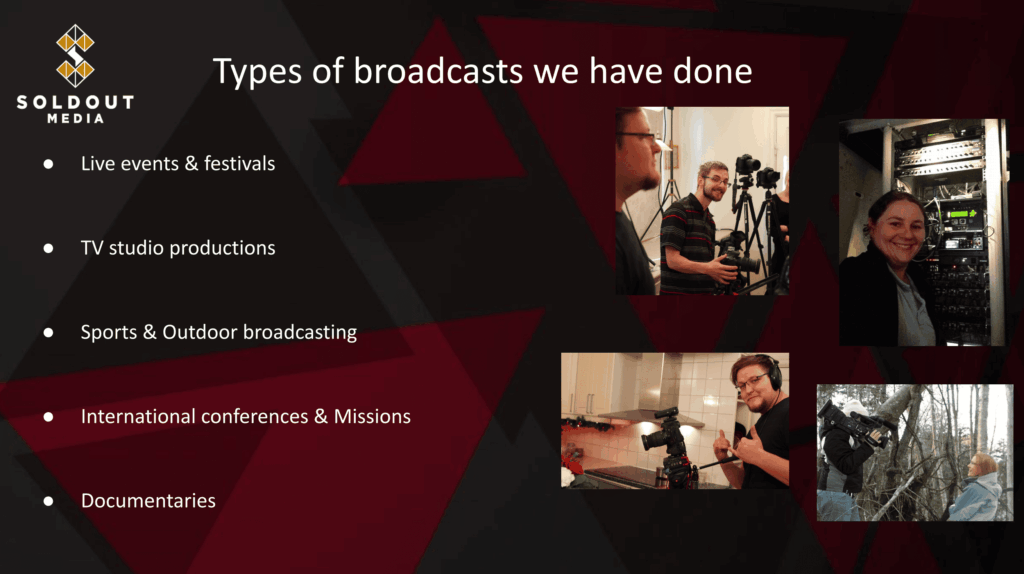
Sold Out Media now uses YoloBox across a range of productions, including live events & festivals, TV studio productions, Sports & Outdoor broadcasting, International conferences & Missions, Documentaries, etc.
Question from Frank
“The question is: actually some of our users or some of our people that haven’t bought YoloBox because they said they want the setup to look big and complex so they can charge the client more. What was your take on this?”
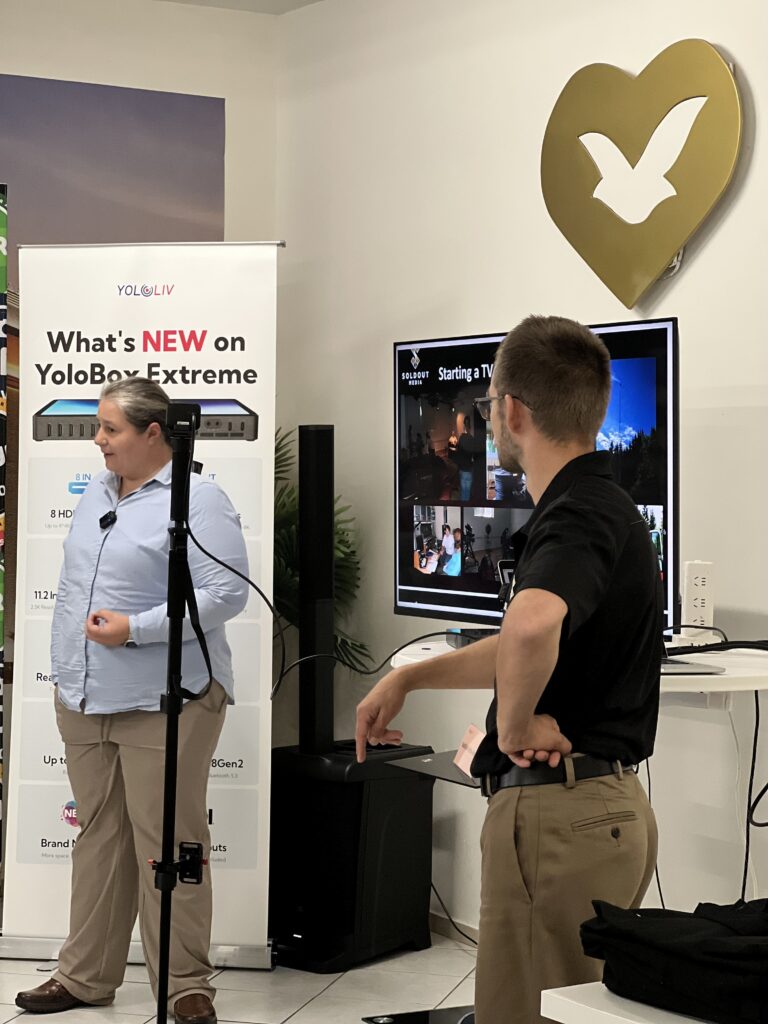
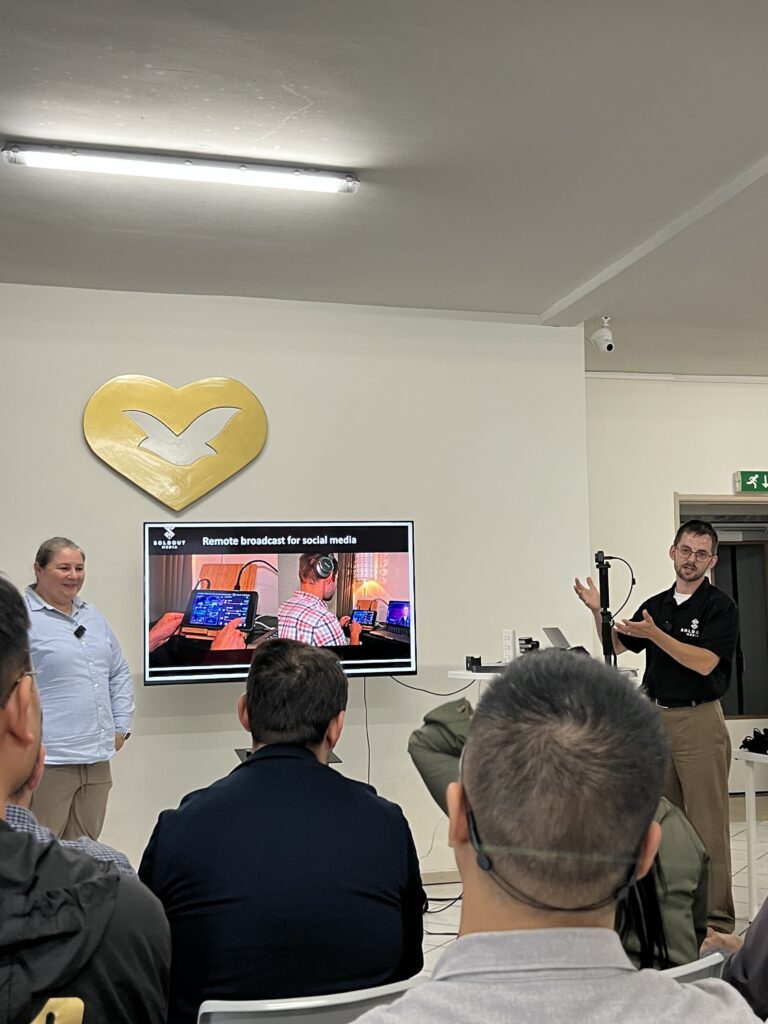
I see this from two perspectives: I remember our TV channel founder who was an early IKEA executive in the lighting department. When we worked with him in his late 60s, he insisted that “everything has to look big.” Meanwhile, I was thinking, “But big means heavy – it’s breaking my back! Couldn’t we use the smaller equipment that’s becoming available? It would save my vertebrae.”
On one hand, I believe people are increasingly aware and accepting that you can get top-tier quality from smaller equipment. I started with those massive 400-pound XD cameras on my shoulder – that’s what clients expected for professional work. But now when we show up with compact cameras like Canon EOS R or Sony A-series, people understand these can deliver the same quality. So the perception that you need bulky equipment to justify higher rates has definitely shifted. I’d argue it’s more about functionality than size. Look at Apple – they just released their smallest iPhone ever, yet I guarantee it costs more than previous models, right? I tell clients: “You wouldn’t carry around an old Motorola brick phone anymore. So why should we use cameras that are just big when the smaller ones are actually more powerful, sharper, and packed with more tools to create better content for you?”
We always show clients our previous successful projects – we document everything specifically for this purpose. Churches are a perfect example. During COVID, we installed broadcast systems in many churches because they needed to reach their congregations. Sure, some clients still want that “big broadcast” look. But when you explain that the bulky alternative comes with a huge cost without any actual benefit to the final product – when you show them the numbers – they start appreciating smaller systems.
There’s another advantage: security. Many clients realize they can’t properly secure large equipment that’s sitting out in the open. With YoloBox, you can lock it in a case where nobody can tamper with it. Plus, smaller gear lets you access venues you’d have to turn down otherwise. Some spaces simply can’t accommodate large boxes and cable runs – there wouldn’t even be room left for the actual event, like a concert. With compact equipment, that’s never an issue.
A New Era of Broadcasting
With YoloBox, Sold Out Media has:
– Reduced setup time and equipment costs largely
– Scaled their production capacity without adding staff or hardware
– Launched international channels with localized live content
– Engaged audiences through real-time interaction
If you’re interested in insights from other speakers and the entire Meet-up process, be sure to check out the full live stream for more details!
2,700 total views, 3 views today
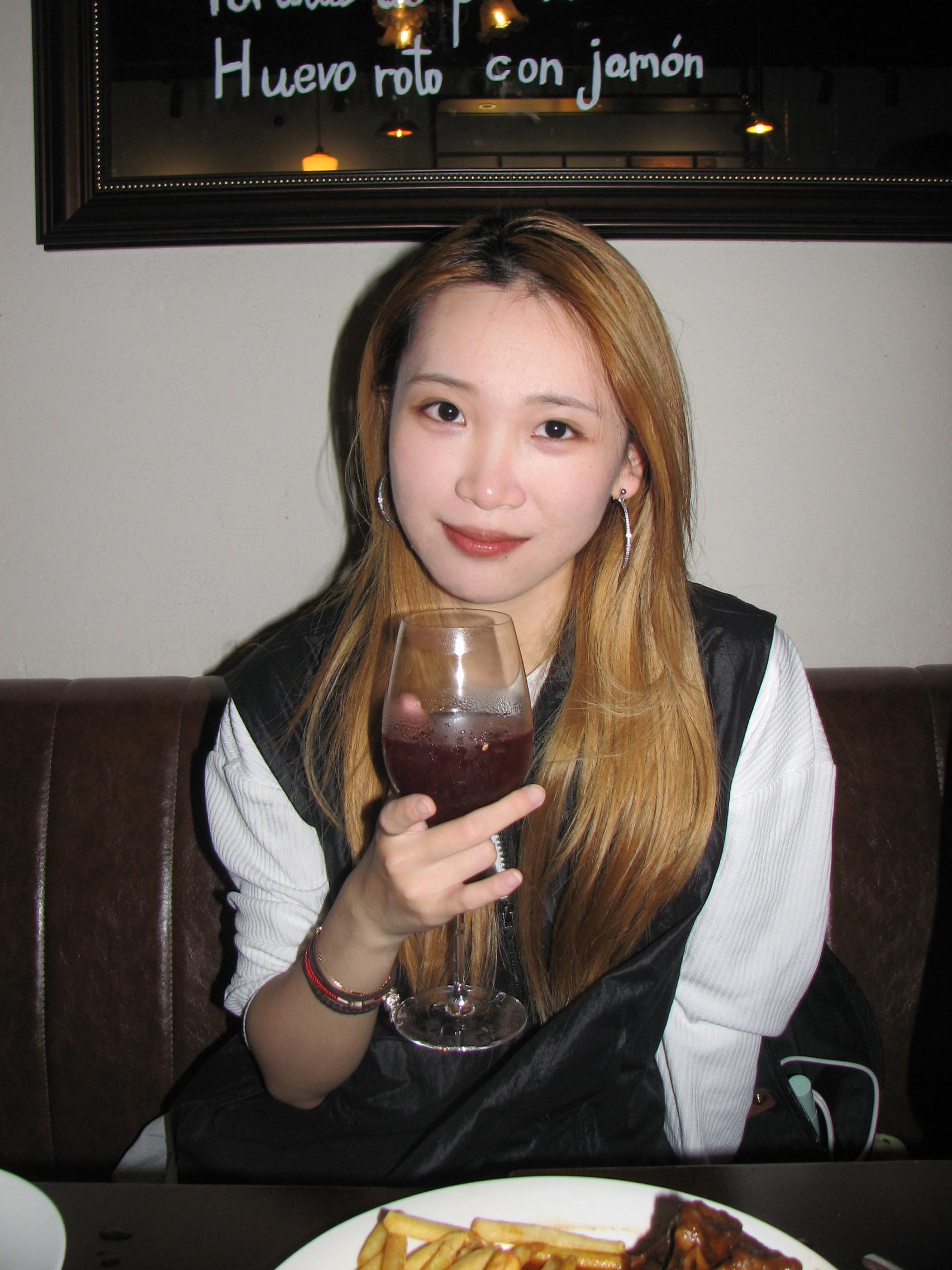
Zoe is a member of the YoloLiv marketing team with a keen interest in the live streaming industry. Recently completing a Master’s in Media Management, she is dedicated to exploring the dynamic world of live streaming. She is actively learning to write insightful articles that share knowledge and trends in the industry.

